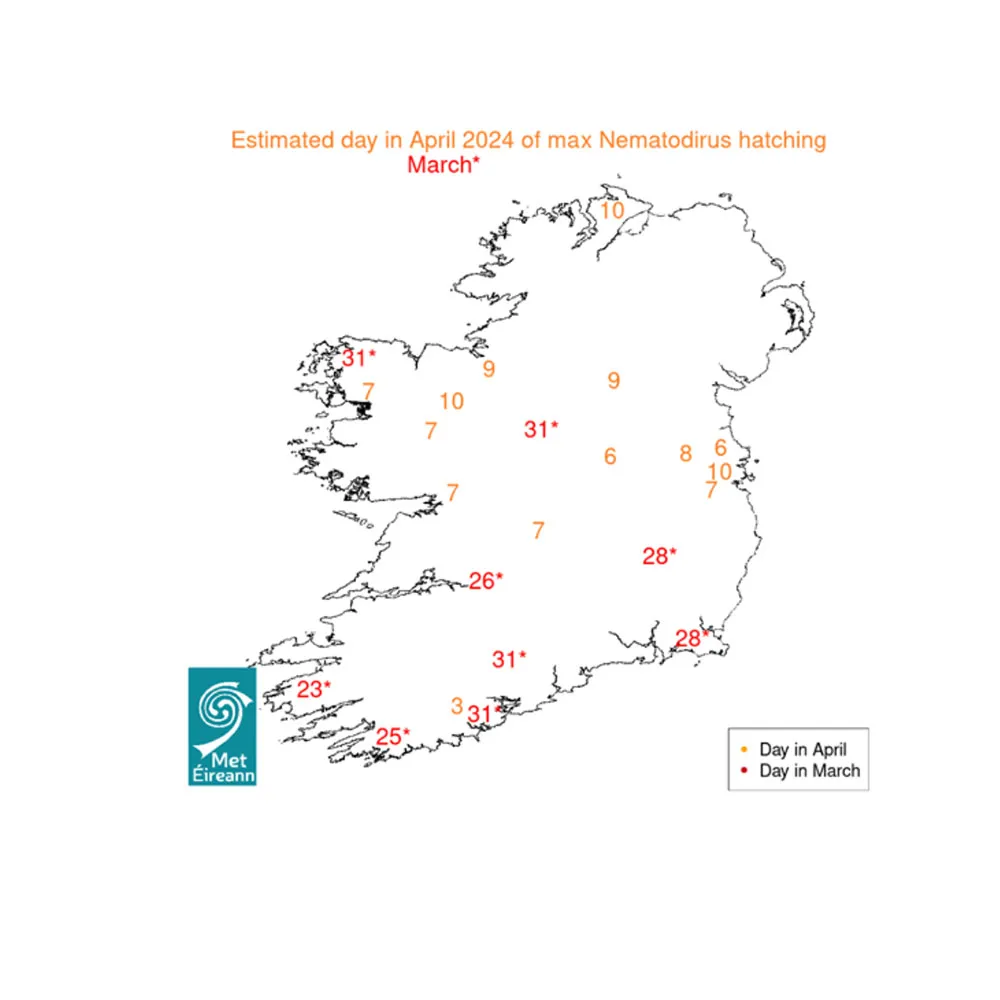
An early hatching season?
Met Eireann issued its annual nematodirus forecast last Thursday. This forecast, which provides a useful service for farmers, is the result of a collaboration between Met Éireann, UCD and Teagasc. It predicts when peak Nematodirus battus hatching will take place in the various regions of the country. The forecast for 2024 indicates a slightly earlier hatching season than usual, which is largely attributable to the mild, wet conditions that dominated throughout March.
According to the forecast, which is available on gov.ie and can be accessed via the Met Eireann website, peak hatching in Munster and south Leinster occurred at the end of March. In the midlands and the northern part Ireland, the peak occurred at the beginning of April.

Nematodirus battus: what is it?
Nematodirus battus is the parasite that causes Nematodirosis in lambs from six to twelve weeks old. Infection occurs when lambs ingest large numbers of Nematodirus larvae on pasture. Nematodirus is unusual as roundworms go, because the eggs it deposits on pasture do not hatch in the same year. Instead, they wait until the following spring to emerge as infective larvae in a “mass hatching” event when conditions are right. While hatching typically occurs in April, disease is most likely to occur in late April, May and June.
What to watch for
As with other parasitic worms of the digestive tract, Nematodirus battus larvae attach the intestinal wall. Infected lambs exhibit the familiar symptoms of a parasitic infection – diarrhoea, weight loss and severe dehydration. Where infection has moved through the flock, lambs may be observed clustering around water sources as they try to quench their thirst.
Weaker lambs, such as twin lambs or lambs getting insufficient milk, are most at risk of severe infection and should be watched especially carefully during the peak infection period. While calves may not suffer symptoms as severe as those observed in lambs, they are also susceptible to nematodirus and should be observed closely.
Fortunately, neither adult sheep nor adult cattle are affected by the parasite.
Treating Nematodirus
If you suspect that you have lost a lamb to Nematodirus, you should ask a veterinarian to do a post-mortem on the dead animal to confirm the parasite’s presence. If Nematodirus is confirmed as the cause of death, you may need to dose all lambs grazing on the same pasture.
Typically, white drenches (benzimidazoles like Albendazole) are considered the most effective treatment. Unlike the parasitic roundworms that trouble animals later in the year, Nematodirus battus appears to have less resistance to benzimidazole drenches. Nonetheless, you should not overdose. Each lamb should be weighed and dosed in line with the manufacturer’s instructions.











